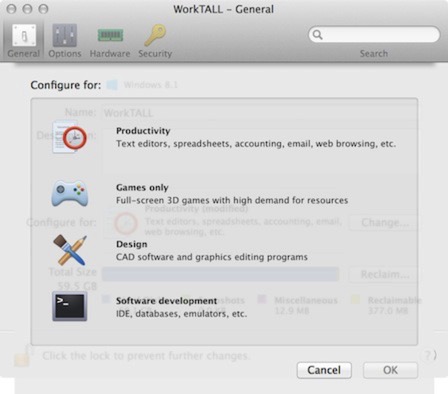Parallels Desktop 10.0
So, there’s a new version of Parallels Desktop 10.0 out - what gives?
====
Doesn’t seem that long ago that Parallels Desktop 9.0 was out - nor VMWare Fusion 6 - does it? My guess is there’s VMWare Fusion 7.0 just around the corner...
Anyway, I wasn’t massively convinced by the upgrade to Parallels Desktop 9.0 - it didn’t readily offer me that much over the previous edition? Seemed upgrade money for no real benefit. Also, I ran into quite a few issues after the upgrade to 9, including:
Issues with iSight Camera and Parallels Desktop 9.0
Pauses & USB Connections/Disconnections
...which to be fair were fixed in updates after a couple of months.
So what about 10.0 then? Is it worth the money? Well, very early to say but initial suggestions tell me it very much is - but not necessarily for new functions and features as such, more for two key impacts of the upgrade, namely:
Memory Footprint. This seems far improved in 10 - the same virtual machine on my late 2013 MBP Retina shows some 60% (!) less memory consumption after boot (which in my setup starts Outlook, Lync and a few other things). To be fair to Parallels, they state about a 10% saving - but on my work machines it was far larger.
Battery Life Impact. This version seems to have a far less demanding load when running on battery.
Just the above two key affects are a driver for me to upgrade - probably with the battery life one more so. I tend to avoid using virtualisation when on the move due to this impact, but the loading now seems more than reasonable, adding more functionality when mobile.
Parallels also state that this version is compatible with OSX 10.10 Yosemite - to be fair, I’d not really ran into any issues using Parallels 9 on Yosemite either, but hey, who knows.
Performance also seems to have taken a bit of a boost - and a real, noticeable one too. I wasn’t convinced with the claims of increases in performance with 8-9, however 9 to 10 really does seem to make a difference. Certainly in Office applications anyway - I’ve not noted any real performance increases with startup/shutdown or snapshot operations, but these were all very fast anyway. They state that there’s a 50% performance improvement....But who knows how valid that is - but I would agree it is faster.
The Windows 7 look is still there, and it still uses Stardock.
Some of the new features seem a little gimmicky - like the optimisation for example. All it seems to do is adjust the number of processor cores and RAM allocated to a machine? Not sure if there’s other optimisations in there, but I couldn’t really see it doing much more.


There are some other neat touches to - for example running Outlook in a VM now shows on the Dock and indicates the number of unread messages in your selected mailbox, much like you would see in Apple Mail or in AirMail.
Control Centre seems to have been tidied up too - everyone in one place, a little neater.
One thing I do quite like is that all of a sudden coherence seems more usable - it’s smoother, and it’s less obvious you’re virtualising something. I don’t often use coherence, but I may do now.
Anyways, early days - will report back after some more reasonable usage. Video below shows a run through on my late 2011 17” Macbook Pro.
blog comments powered by Disqus